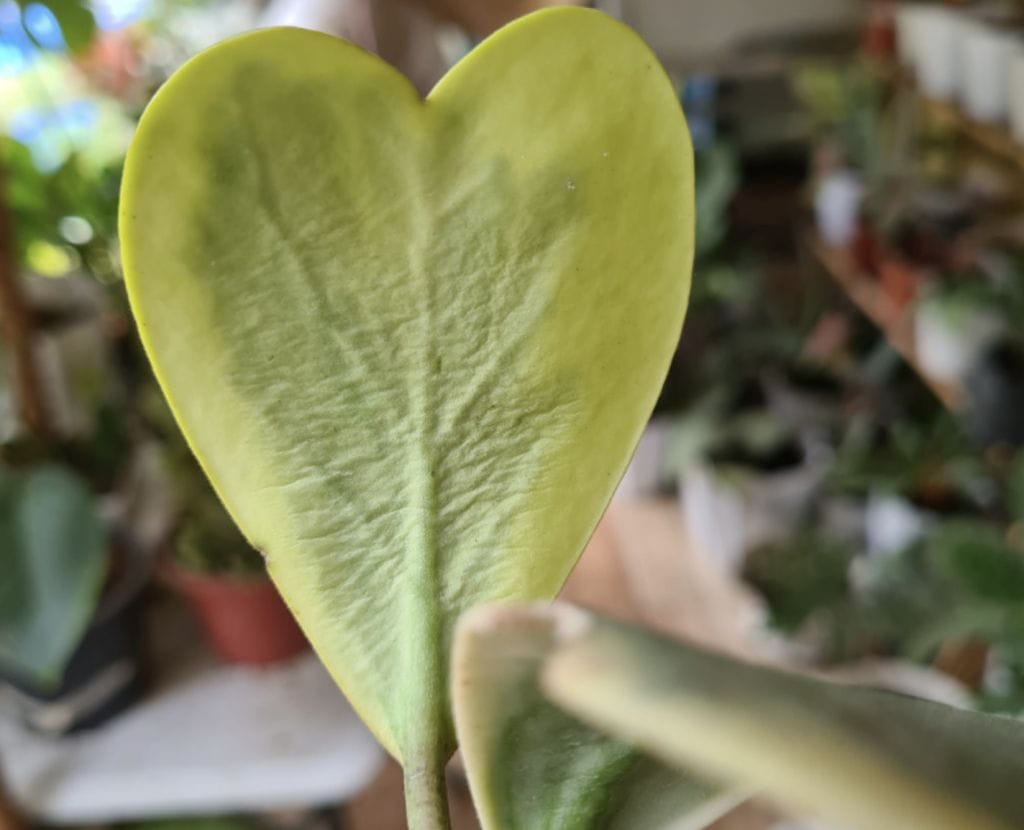Hoya Leaves Soft and Wrinkled -A Troubleshooting Guide

By cultivating an understanding of the Hoya plant and its unique needs, we empower ourselves to nurture a healthier and more vibrant indoor garden. Let’s uncover the mysteries of soft and wrinkled Hoya leaves together.
Unveiling the Mysteries of the Hoya Plant
As the dawn breaks, you reach out with quiet anticipation to feel the strong, waxy leaves of your beloved Hoya plant, only to discover they are now soft and wrinkled. The beauty of the lush green foliage has started to fade, leaving you with a nagging question, “What could be wrong?”
To answer this question, we must embark on a journey into the captivating world of Hoya plants. Although these resilient tropical climbers have adapted to survive in various conditions, certain factors can still lead to soft and wrinkled Hoya leaves. We’ll uncover these factors, provide solutions, and help you avoid this common issue in the future.
Why are my hoya leaves wrinkled and soft?
Here are some of the primary reasons why Hoya leaves become wrinkled and soft :
Water Stress
Dr. Ann Liebert, a renowned botanist, once said, “The balance of water in a plant’s life is as crucial as the balance of love in our lives”. Overwatering and underwatering, like extremes of any kind, can distress the Hoya plant, leading to soft, wrinkled leaves. It’s not just about watering but how and when.
Overwatering saturates the roots, leaving them gasping for air, which results in leaves becoming soft and eventually wrinkled. Conversely, underwatering deprives the plant of its lifeblood, making the leaves lose their firmness and wrinkle.
Temperature Shock
Just as we humans suffer when thrown into an unfamiliar environment, so does our leafy friend, the Hoya. An abrupt temperature change can shock the plant, causing its leaves to become soft and wrinkled.
Post-Repotting Trauma
Sometimes, the leaves may go soft after repotting, an act that can be traumatic for the plant. Repotting disturbs the root system, which needs time to adjust to its new environment.
Fungal Infections
Fungal infections, the silent invaders of the plant world, can cause soft and wrinkled leaves. These unwelcome guests creep into the Hoya’s living space, causing an array of symptoms, including leaf softening.
Water Stress: Overwatering and Underwatering
Overwatering
Detecting Overwatering
Overwatering often results in leaves that are not just soft and wrinkled, but also discolored. If you find yellowing leaves or soggy, waterlogged soil, you might be overwatering.
The Remedy: Balancing the Water
The key to remedying overwatering is balance. Reduce watering and ensure proper drainage to prevent water from stagnating. Remember, it’s always better to err on the side of underwatering when it comes to Hoyas.
Underwatering
Detecting Underwatering
Underwatering is usually indicated by soft and wrinkled leaves along with dry, crumbling soil. The plant appears thirsty and limp, yearning for hydration.
The Remedy: Quenching the Thirst
Revive your plant by soaking the dry pot in water for about 10-15 minutes, allowing the roots to rehydrate. Afterward, establish a regular watering schedule, but beware of overcompensation!
Temperature Shock: From Tropical Comfort to Unforeseen Cold
Detecting Temperature Shock
If your Hoya has been subjected to sudden temperature drops or intense cold drafts, it may show signs of temperature shock. The leaves turn soft, and a wrinkling pattern begins to emerge.
The Remedy: Keeping it Warm
Hoyas thrive in warmer conditions, between 65-80°F (18-27°C). Therefore, avoid placing your plant in drafty areas or close to air conditioners or open windows during cold weather. Gradual temperature adjustments are the key to a thriving Hoya plant.
After the Storm: Soft Hoya Leaves Post-Repotting
Detecting Post-Repotting Trauma
If your Hoya plant exhibits soft and wrinkled leaves shortly after being repotted, it could be a sign of repotting stress. The roots might be in shock from the disturbance, leading to visible distress signs on the leaves.
The Remedy: Offering Post-Repotting Care
Patience and gentle care are the best remedies here. Maintain an appropriate watering schedule, provide ample indirect sunlight, and keep the plant in a stress-free environment. The plant should gradually adjust to its new home and recover.
The Unseen Battle: Fungal Infections
Detecting Fungal Infections
Fungal infections often manifest as discoloration, wilting, powdery mildew, and soft and wrinkled leaves. This is a sign that your Hoya plant is under fungal attack.
The Remedy: Fighting Back
Isolate the infected plant to prevent spreading. Remove the affected leaves, then treat the plant with a suitable fungicide. Remember, prevention is better than cure. Maintain cleanliness and ensure good air circulation around your plant to keep fungi at bay.
In Conclusion: Nurturing Your Hoya Plant
Becoming an effective plant parent requires keen observation, understanding, and patience. Remember, no matter what problem your Hoya plant faces – soft and wrinkled leaves due to water stress, temperature shock, repotting trauma, or fungal infections – there’s always a solution.
So, the next time your Hoya leaves go soft and wrinkled, rather than succumbing to panic, embark on this troubleshooting journey. Recognize the signs, identify the cause, implement the remedies, and watch your Hoya plant return to vibrant life. The joy of seeing your plant thrive and flourish is indeed incomparable, making the journey worth it.
As a passionate Hoya plant lover, you’re not just growing a plant but nurturing a living, breathing being, fostering growth, and creating life. And in the process, you’re growing too. After all, the beauty of gardening lies not just in the plants we grow but in ourselves as we cultivate patience, empathy, and a deeper connection with nature.
So, let’s continue to grow together, one leaf at a time. Happy gardening!
The mysteries of soft and wrinkled Hoya leaves may seem daunting at first, but with patience and understanding, every plant parent can navigate these challenges and cultivate a vibrant and healthy Hoya plant.







